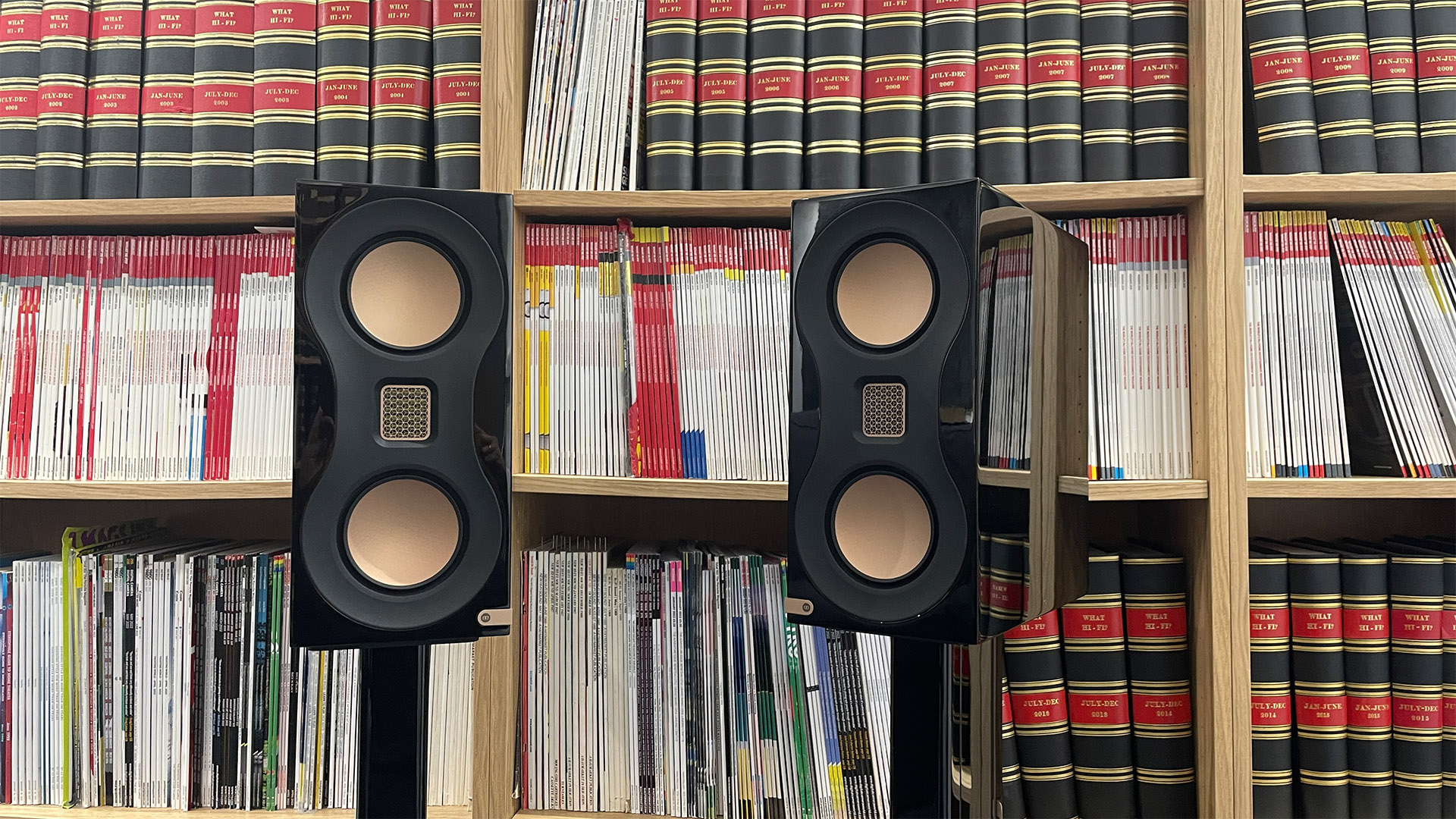
Monitor Audio would like you to think of the Studio 89 as a brand new speaker; one that invokes memories of past greats, particularly the Studio 15 model introduced in 1989. See what they did there with the name? The Studio 15 was a largish two-way standmounter and the only model in that range to combine a black high-gloss finish with the company’s distinctive gold anodised drivers. The new Studio 89 mirrors that finish combination and looks rather lovely with it; but beyond the choice of colours there is little in our view that links the old with the new.
The Monitor Audio Studio model released in 2018 is a more credible ancestor. The two look all but identical at a casual glance if you ignore the new model’s distinctive colour scheme. That may not be good news. Our original review of that earlier model speaks of a talented but uneven performer that failed to convince, musically. Three stars.
A further potential blow is the significant price difference between the two. The original retailed for £1000 back in 2018, whereas this new one now weighs in at double that. Even if we acknowledge that costs have risen strongly in the past six years, that price jump feels massive.
So, it is obvious that the Monitor Audio Studio 89 stereo speakers have their work cut out, but we are an optimistic bunch here at What Hi-Fi?. Talking to the team behind the product, it is clear that the lessons learned in developing the company’s high-end Hyphn floorstanders have been applied in all aspects of this new speaker’s design, most obviously in the drive units.
Design & engineering
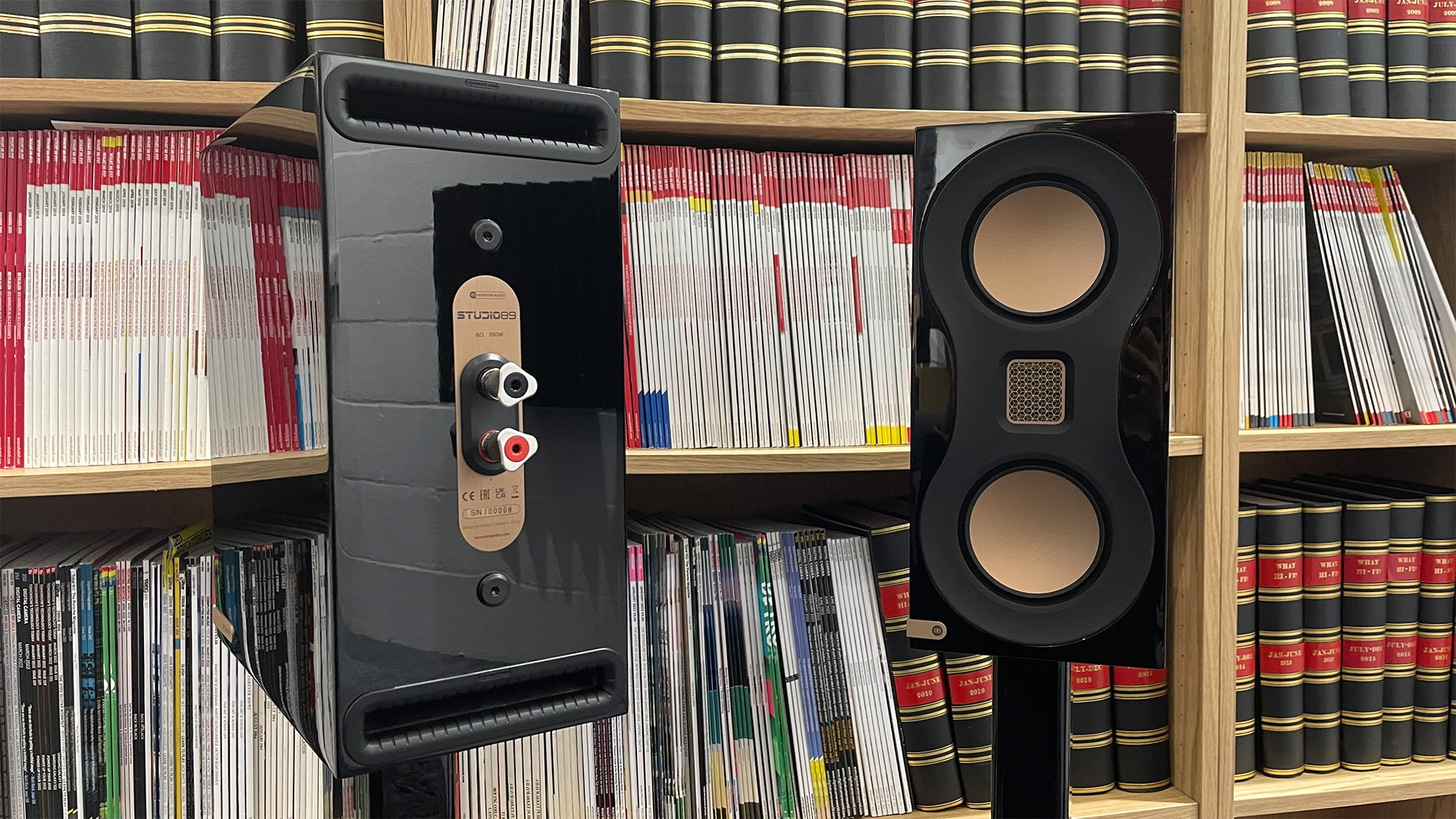
The new third-generation MPD (Micro Pleated Diaphragm) tweeter is a technical highlight. It is an in-house AMT (Air Motion Transformer) design with a folded diaphragm which moves concertina-style to produce sound. Such a design is claimed to be more responsive and deliver lower distortion than conventional dome alternatives because it typically has less mass and is driven across more of its surface. This particular unit is claimed to have an extended frequency response to 60kHz (conventional AMTs tend to reach around 40kHz) and more even dispersion characteristics thanks to a carefully shaped waveguide and intricately patterned tweeter grille borrowed directly from the flagship Hyphn.
The speaker’s twin mid/bass drivers are equally impressive. These are the latest version of the company’s RDT III C-CAM unit that uses a composite diaphragm made of a Nomex honeycomb core sandwiched between a ceramic-coated aluminium magnesium (C-CAM) layer and a carbon-fibre weave. The result is a light, rigid and well-damped cone, which bodes well for all aspects of sound quality. The mid/bass units are designed to have high power handling (Monitor Audio claims 150 watts RMS continuous) and be capable of large excursions to cope with deep bass and savage dynamic swings at high volume levels.
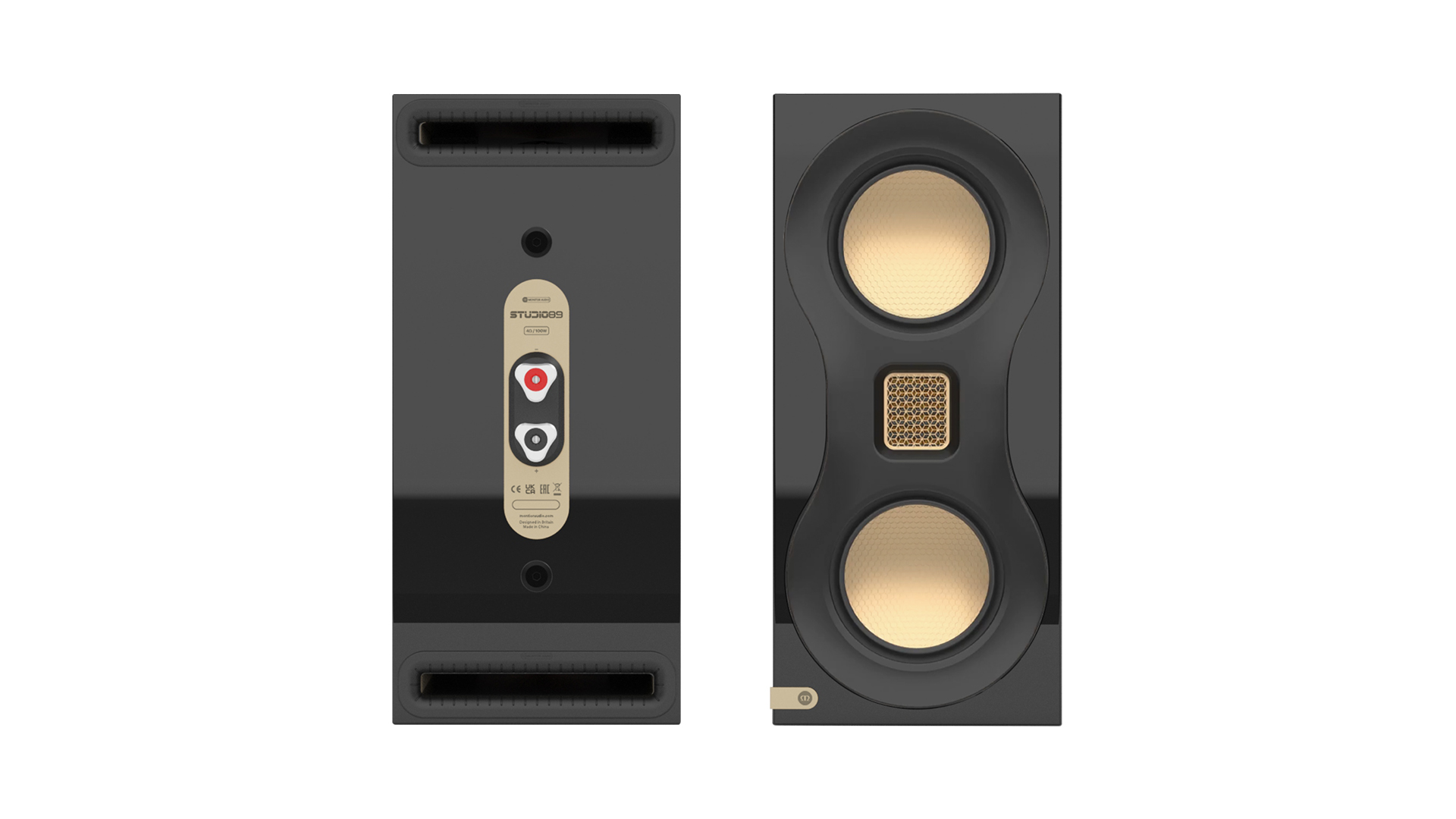
Type Standmounts
Drive units MPD III (AMT) tweeter, 2 x10.8cm mid/bass
Ported? Rear x 2
Bi-wire? No
Impedance 6 ohms
Sensitivity 86dB
Dimensions (hwd) 34 x 15.7 x 36.1cm
Weight 7.6kg
Finishes x 1 (Gloss black)
Given that the drivers are small, at just 10.8cm in diameter, it makes sense to use two of them to get greater bass output and higher volume potential. Punching a few numbers into a calculator shows that doubling up on drivers gives a similar radiating area to a typical single 15cm unit. The advantage here is that they can be placed above and below the tweeter, helping to control dispersion and improve integration. The bass is tuned by two rear-firing slot-shaped ports.
All three drive units are mounted on an aluminium front baffle, and that complete sub-assembly is clamped into the cabinet with long bolts that come through the back panel. It’s a neat arrangement that offers an advantage in terms of rigidity but also gives the speakers a clean look devoid of fussy-looking fixings. We approve.
The three drive units cross over at 2.4kHz using a relatively simple but high-quality network. The company hasn’t skimped on parts, using polypropylene and polyester capacitors and a combination of air core and low-loss laminate steel core inductors to deliver the music signal with minimal distortion. The crossover design has been arrived at by a combination of measurement and many hours of listening. The result is that the Studio 89 have a sensitivity of 86dB/W/m and a nominal impedance of 6 ohms (with a minimum of 4.2 ohms at 220 Hz), which puts them in the same ballpark as rivals such as KEF’s R3 Meta and Neat’s Petite Classic.
Build & compatibility
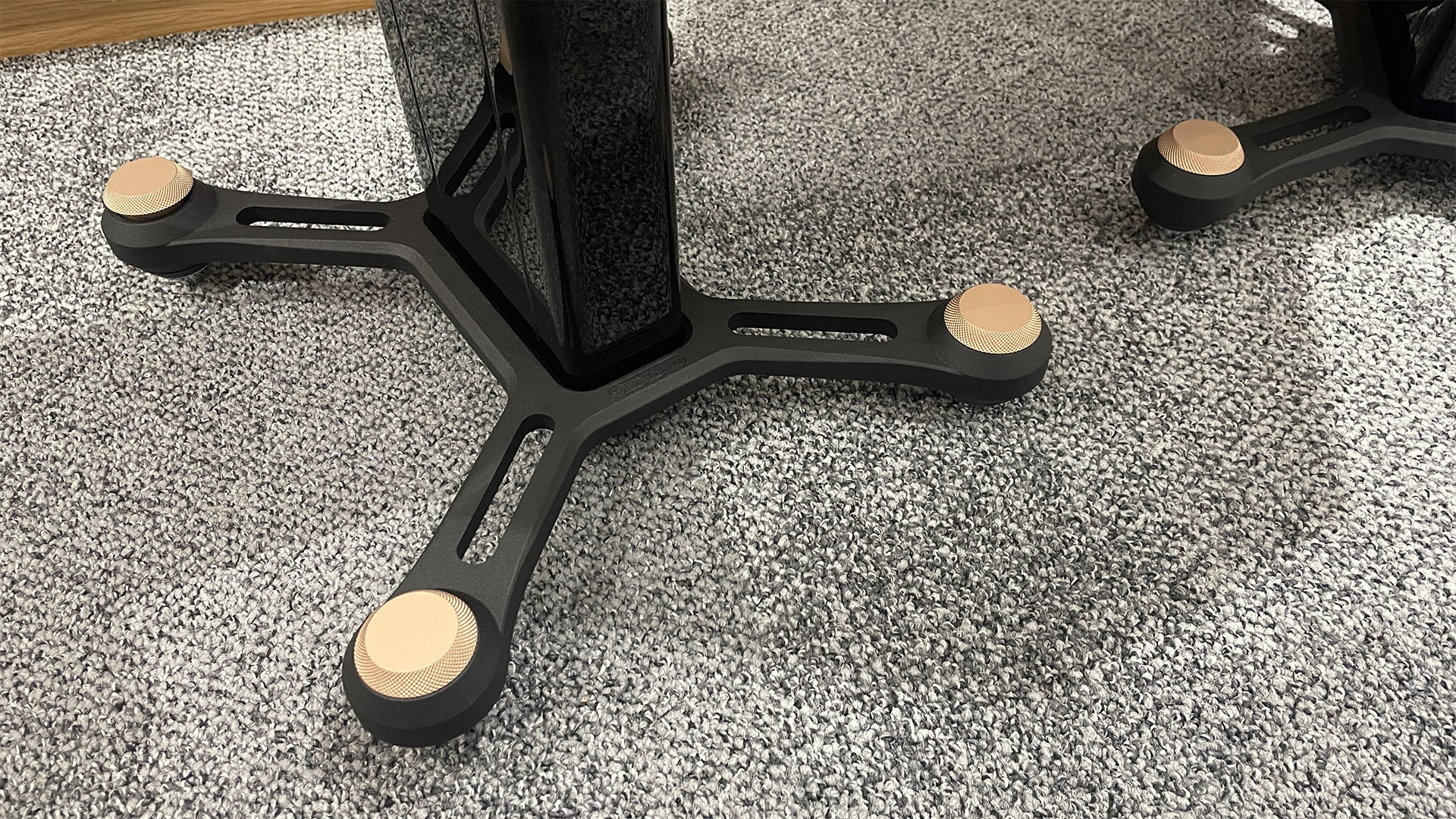
Build quality has long been a strength of Monitor Audio, so it comes as no surprise that the Studio 89 are beautifully made and finished. That slim cabinet feels immensely solid and is finished to an exceptional standard. We love the attention to detail here, from the little name badge at the front that folds around the cabinet corner to the luxurious-looking pair of single-wire terminals. There is only one finish option, and that’s the gloss black cabinet with the gold drive units. We think it looks suitably classy compared to the competition.
The performance of any standmount design is largely dependent on the quality of its support. We are pleased to find that Monitor Audio makes dedicated speaker stands for these speakers (that looks suspiciously like the one made for the 2018 Studio model by the way). At £500 / $625 it remains a fine choice, looking remarkably elegant by industry standards.
Any speaker at this level can only shine with carefully chosen electronics. The Studio 89 may be small, but they excel when driven by a quality amplifier with a decent amount of grunt. While the likes of Cambridge’s CXA81 or Arcam’s A15 will produce good results, we like the way these speakers perform as we climb up the amplification ladder from Naim’s Nait XS3 integrated to PMC’s Cor.
Sound
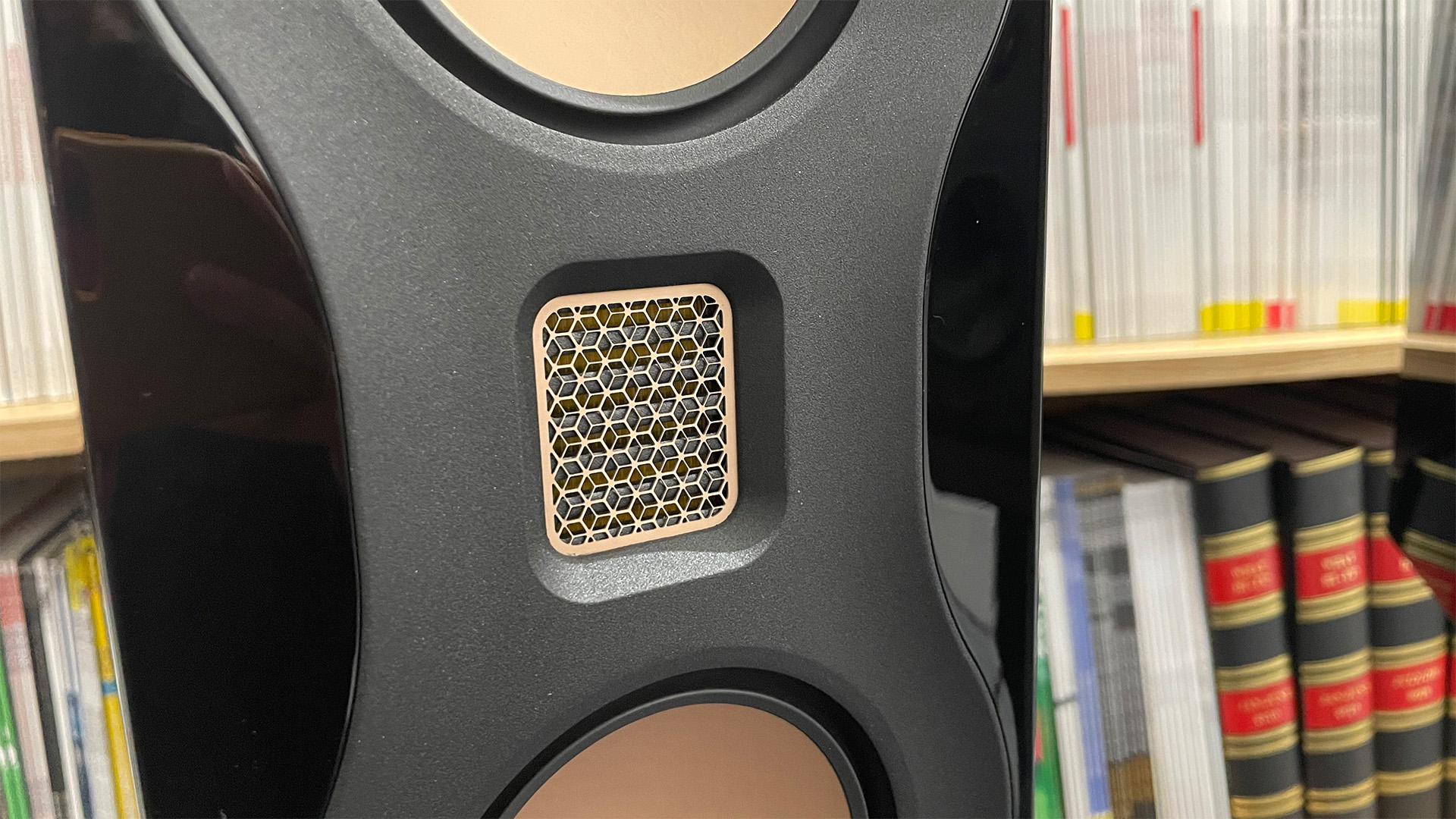
Our concerns about the similarities between this product and the 2018 Studio prove unfounded. Whatever they share in visual and engineering terms it is clear that the new Studio 89 are markedly superior performers that fully justify their premium price. They sound natural and balanced in a way that eluded that earlier product, so much so that we feel no more need to mention that design. It is how this Monitor Audio compares with price rivals such as the aforementioned KEF and Neat that really matters; and judged in that context they do very well.
If we were asked to describe the Studio 89’s sound in three words it would be detailed, agile and polished. Their presentation is impeccably clean and precise without sounding overly analytical. They can delve deep into a complex production such as Massive Attack’s Heligoland and reveal subtleties that most rivals simply overlook. While there is no denying their control and organisation, we are pleased that they also retain enough of the music’s dramatic energy to be a fun listen.
It helps that the Studio 89 have a good sense of rhythmic drive and the kind of surefooted timing that can’t help but get your feet tapping with appropriate music. We love their sense of cohesion and the seamless way the drive units integrate. Those hours spent fine-tuning the crossover have paid off.
These are small speakers, so it pays to have realistic expectations in terms of bass reach and punch, and given those we think most listeners will be impressed by what Monitor Audio’s engineers have managed. On Paradise Circus, the Studio 89 dig deep and true right down to their limit and are controlled enough not to over-extend themselves. Do they set class standards when it comes to outright sonic authority or bass power? No, but they do sound solid and meaty within their limits, and in most cases we think they deliver convincingly.
Focus on the mid and higher frequencies and you should find that these speakers shine. They are wonderfully articulate with voices, and render them with natural weight and warmth. There is no shortage of clarity and, no matter how complex the music gets, it is easy to keep track of low-level instrumental strands.
Switch to Bizet’s Carmen Suite and these Monitor Audio speakers continue to impress with their well-balanced tonality and pin-sharp stereo imaging. If positioned with care – in our room around 70cm from the rear wall and slightly angled towards the listening position – these are the kind of speakers that disappear within a stereo image. That speaks well of their dispersion characteristics and well-controlled cabinet behaviour. The soundstage is drawn with care and stability, coming across as being beautifully layered with appropriate recordings.
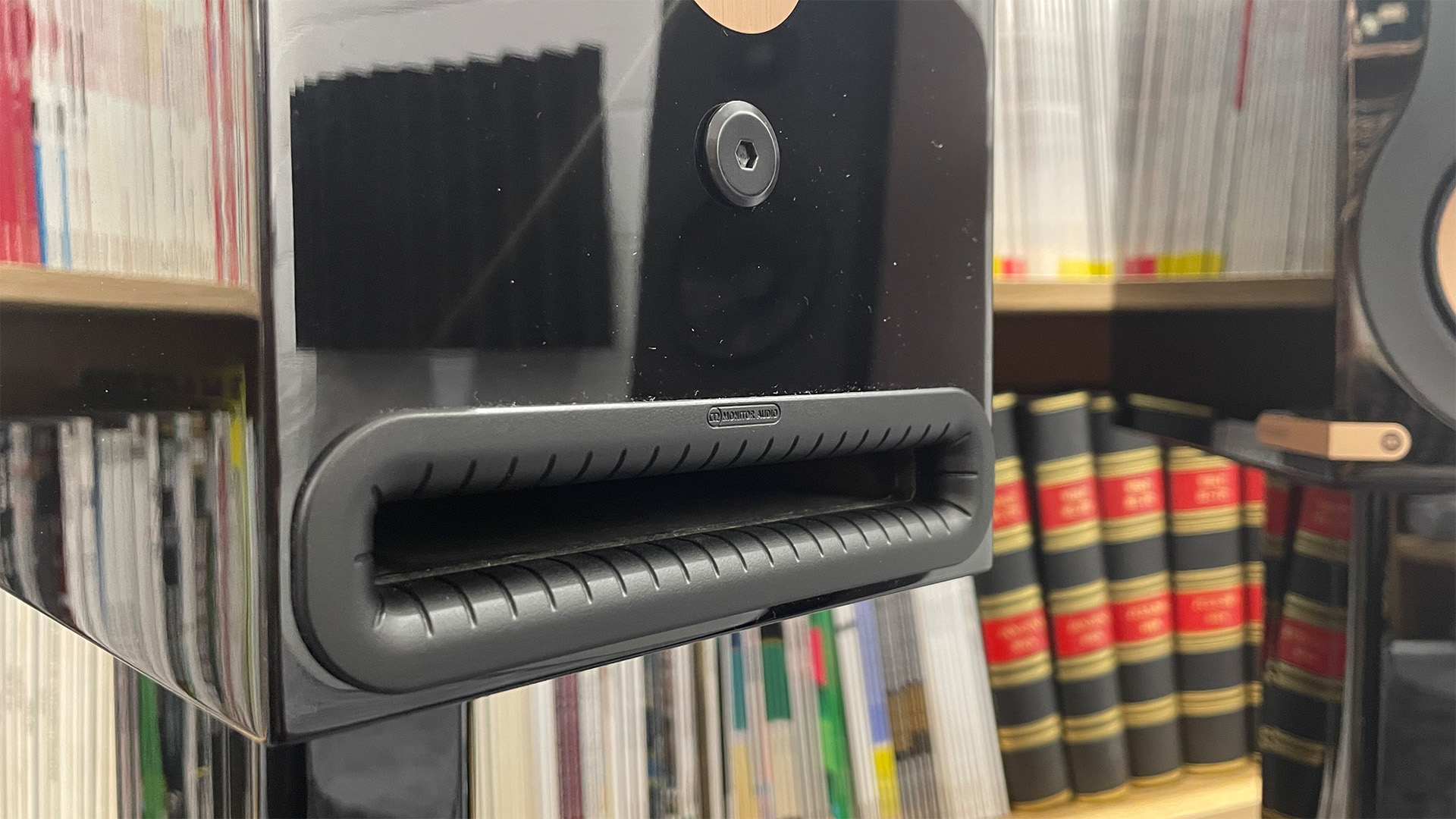
Tonally things are even and well-balanced. In no way do these speakers sound forward, thin or undernourished. If they do come across that way, then the finger of blame should point to the rest of your set-up. Within realistic limits, they are capable of wide-ranging dynamics and proper punch when orchestral crescendos hit. When that happens, these speakers have the composure to stay clean and the refinement to avoid any harshness or edge.
During our time with these standmounters, we try a wide range of music from the hip-hop of Wyclef Jean to Nick Cave’s The Boatman’s Call and the Broadchurch OST from Ólafur Arnalds, and we never feel shortchanged. Given their compact size, they hide their innate size limitations well.
Compared with their obvious rivals it's a case of swings and roundabouts. All are exceptional, but the KEF R3 Meta are the best at rendering scale and authority. They also have the widest dynamic reach and that cohesion through the midrange and treble is excellent thanks to the latest-generation Uni-Q driver array. The Neat Petite Classic aren’t quite as polished as either of the other two but they are so much fun to listen to. To our ears they are the most exciting performers of the three and seem to capture the energy of the music better than any rival, even if they don’t quite sound as neutral or clean.
Verdict
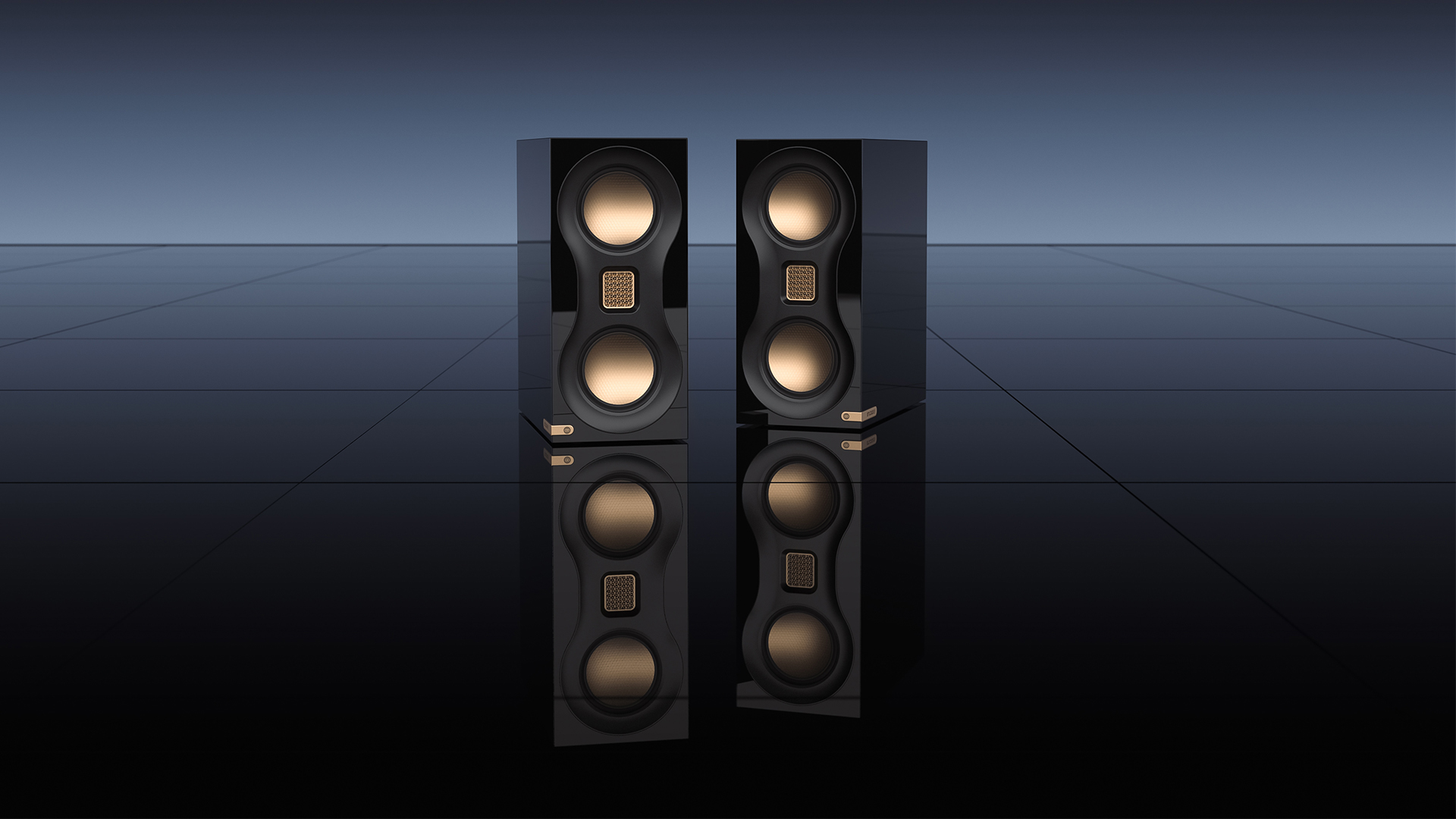
As for Monitor Audio's Studio 89, they are talented and engaging performers that excel in clarity, precision and resolution. If you are looking for high-quality speakers at this level, though, you have to listen to the KEF R3 Meta, Neat Petite Classic and the Monitor Audios before deciding.
SCORE
- Sound 5
- Build 5
- Compatibility 4
MORE:
Read our review of the KEF R3 Meta
Also consider the Neat Petite Classic
Read our ProAc Response D2R review
Best bookshelf speakers: top standmounts for every budget tested



!["[T]he First and Fifth Amendments Require ICE to Provide Information About the Whereabouts of a Detained Person"](https://images.inkl.com/s3/publisher/cover/212/reason-cover.png?w=600)



